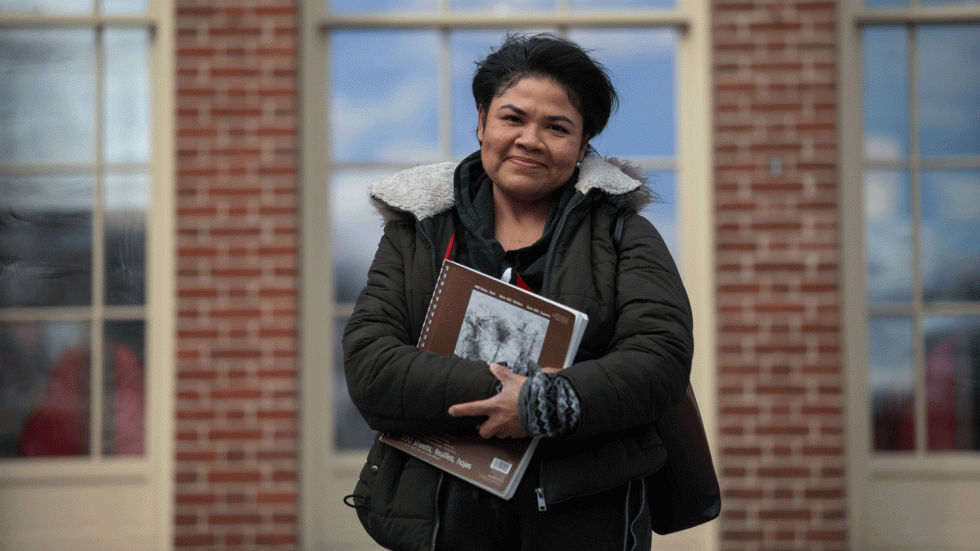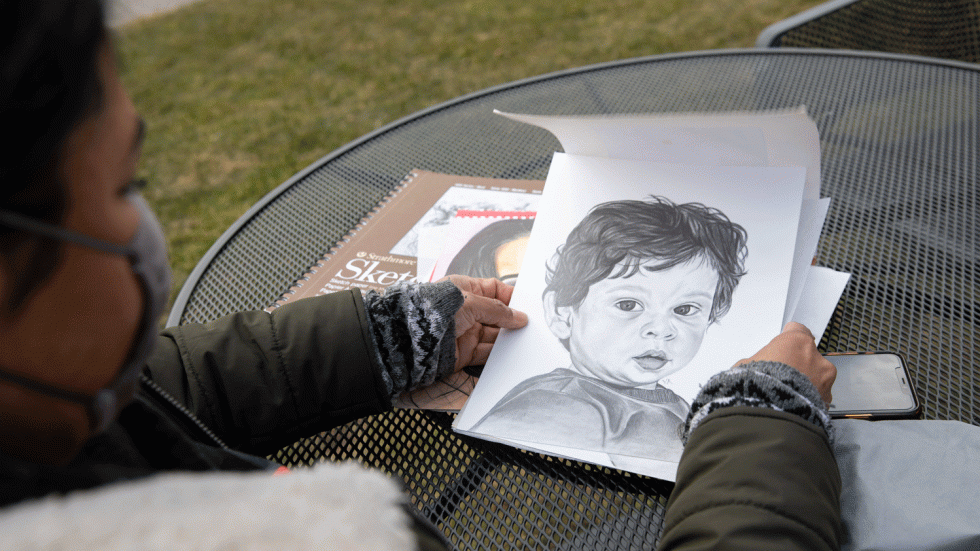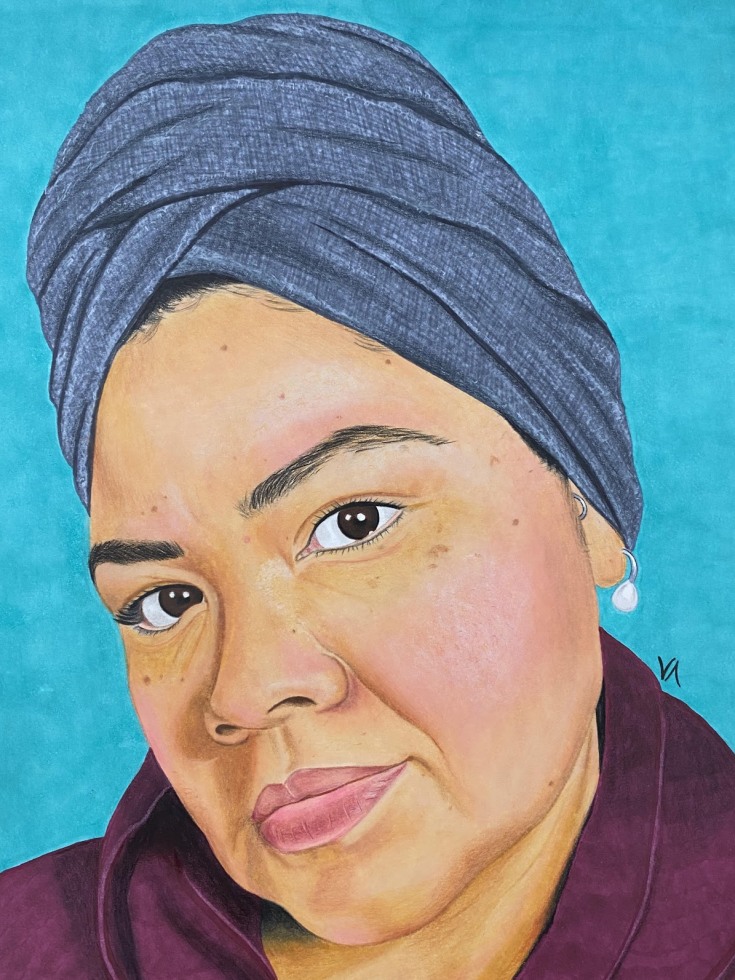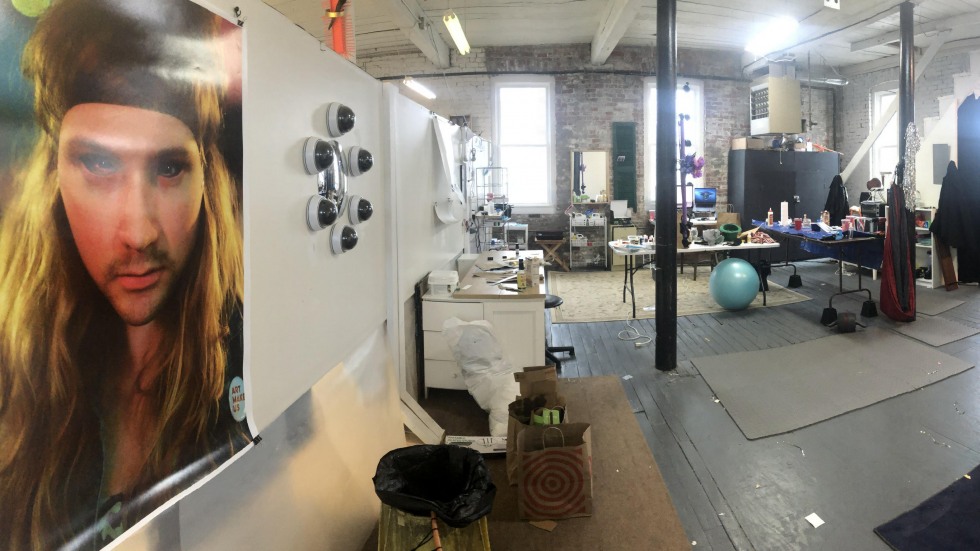PROVIDENCE, R.I. [Brown University] — Fifteen years ago, Viveka Ayala-Heredia made her first attempt at drawing a self-portrait. It didn’t go so well.
“It didn’t end up looking like me at all, because I couldn’t stand the process of studying my own face,” Ayala-Heredia said. “I had severe acne and I wasn’t feeling very confident about myself. I wasn’t prepared to analyze my own appearance so closely.”
By 2020, Ayala-Heredia —a senior research assistant at the Center for Health Promotion and Health Equity in Brown’s School of Public Health — was ready to give it another try. Months before, she had begun to invest more heavily in her own health and well-being, and she said a new self-confidence readied her to jump back in. This time, Ayala-Heredia felt proud of the result — so proud, in fact, that she submitted the self-portrait to be included in “After Hours,” an annual art exhibition mounted by the Brown Arts Initiative featuring original work by staff members from across the University.
Year after year, the art featured in “After Hours” reveals that after Brown employees leave their desks, labs and work sites, many trade keyboards for canvases and meetings for modeling clay. Health promoters take up embroidery and cross stitch. Grant writers dabble in ceramics. Construction staff fuse intricately patterned layers of glass in kilns. Organizers say the exhibition is an eye-opening reminder that Brown’s employees are as innovative, thoughtful and bold in their free time as they are at work.
“After Hours”, typically an in-person exhibition held at the Granoff Center for the Creative Arts, has moved online this year in response to the COVID-19 pandemic. The exhibition is available to view through the end of the Spring 2021 semester.






